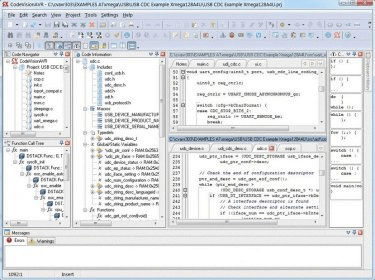


It can connect using ‘SD buses’ or ‘SPI buses’.
CODEVISION ARM SERIAL
The SD card can be interfaced with the microcontroller using serial data bus. The contents of these registers are read only. These registers store the status of the SD card. Other than the ‘memory core’ there are certain registers associated with the ‘SD card controller’. The capacity of the ‘memory core’ is referred to as the size of the SD card. It can respond to certain set of standard SD commands and read or write data from the memory core in for the external device. The ‘SD card controller’ helps to communicate the ‘memory core’ with the external devices like microcontrollers. Hence this is the region where the file system exists. When we format the SD card a file system will be written into this region. The ‘memory core’ is the flash memory region where the actual data of the file is saved. The SD card is consisting of two basic semiconductor sections, a ‘ memory core’ and a ‘ SD card controller’. The ultimate aim of this project is to read a file from the FAT32 file system of the SD card. A 2GB SDSC card from Transcend is used in this particular project, but the code will work with most of the SD cards. The microcontroller runs on 5V power supply with a built in crystal frequency of 8 MHz. In this project an ATMEGA16 microcontroller is used.
CODEVISION ARM HOW TO
This project explains how to interface the SD card with an AVR microcontroller. The following section explains the SD card working in detail. Explanations of the FAT32 file system and how to access files from these file system is explained in this project. The generalized code for the FAT32 is written to interface the SD card. The SD card has been formatted as FAT32 before interfacing. In this project an ATMEGA16 microcontroller is used.


 0 kommentar(er)
0 kommentar(er)
